|
I was connecting with Liz Stockton of X-Port Paws recently about No Kill philosophies and specifically about how some people say that if we just did ________________ (fill in the blank with one thing) the problem would be solved and all the healthy and treatable animals in our nation's tax-funded animal shelters would be saved. I wish it was that simple. Really. I do. If you are familiar with this blog or my website at all, you know I promote the No Kill Equation and have since I first learned about it almost 20 years ago after reading Nathan Winograd's groundbreaking book: Redemption: The Myth of Pet Overpopulation and the No Kill Revolution in America. The short explanation is that the Equation is a DIY series of programs that work together to help reduce the number of animals entering shelters (while helping the public) and that help animals who do end up in shelters to be placed faster (know of as a shorter "length of stay"). All shelters can and should learn about the Equation and take immediate action to stop the outdated (and I would argue unethical) practice of ending the lives of healthy and treatable animals for space or convenience. There are other ways to function and to the extent any shelter purposefully remains mired in the past, I view that a betray of the public trust. After speaking with Liz, I wanted to address the "If We Just Did This One Thing" theories I hear about most often. Spay and Neuter. Not a week (often not a day) goes by when I do not learn of someone saying, "if people would just spay and neuter their pets, animals would not die in shelters." It is absolutely true that if more people spayed and neutered their pets in any given community, there would be fewer animals in the community which may mean fewer animals entering the tax-funded animal shelter. I know some veterinarians charge hundreds of dollars for the surgery and a lot of people just can't afford that while trying to pay rent and feed their families. We can tell them that it costs more to care for a litter than to just have animals sterilized but that's a hard sell when your kids are hungry and there doesn't appear to be an immediate risk your dog will cause a pregnancy or become impregnated. Access to high volume/low cost spay neuter is one of the 11 elements of the No Kill Equation which helps keep pet populations low which, in turn, reduces intake. In the city where I work, there is a nonprofit spay/neuter clinic that is open to anyone no matter where they live or how much money they make. The city also funds a spay/neuter program for low-income residents so they can have pets sterilized for $5. This program, the availability of the nonprofit clinic and other factors have helped cut the shelter intake at the tax-funded animal shelter in half over a period of about five years. Communities that make an investment in programs like this are getting ahead of the issue by spending to prevent births as opposed to spending to impound, house and then destroy animals. I also support laws that require any animal adopted from a shelter or rescue group to be sterilized. I know there are some animal shelters and rescue groups that transfer ownership of animals old enough to be sterilized who are still intact. For shame. I know this happens a lot and it is irresponsible. The "promise method" some shelters use to try to get people to have animals sterilized after they are adopted seldom works. People may agree to have the animal spayed or neutered and may even sign a document in which they agree to do that. Once ownership is transferred, enforcement of the promise method is practically impossible. People often mean well and plan to have the surgery performed but then other priorities (either financially or based on busy schedules) prevents that from happening. Once ownership has changed hands, the shelter can't just demand the animal be returned and even if someone signed a document promising to have the surgery peformed, it becomes a civil issue to be handled legally, something I have never seen a shelter attempt. Ever. I do not support mandatory spay neuter for owned animals, often called MSN. This is punitive legislation that tries to force people to have all owned pets sterilized. Even in places that have MSN, there are exceptions for breeders, exceptions for people who do not want their pet sterilized on advice of their veterinarian and enforcement is almost impossible. I blogged about this fairly recently and will not cover this same topic in full again. I do encourage anyone who believes forcing people to have pets sterilized (as opposed to making it easy and affordable) to read my blog linked above. If you still support MSN after having read it, feel free to contact me so we can talk about your position. As Nathan Winograd says in his video No Kill 101 (which I share with elected officials often): "for decades, spay/neuter has been hailed as the singular solution to shelter killing, though it alone has never successfully created a No Kill Community. Why? Because spay/neuter focuses primarily on those animals who have yet to be born, leaving the animals already in shelters and who are under an immediate death threat with no protection from killing. In other words, while a significant investment in sterilization can reduce intakes over the long term, and that is important, it is no substitute for saving lives today." Rescues and Transports. There are those who profess that the single solution to end shelter killing is to get more rescue groups to help get animals out of shelters to transport more animals to different parts of the country. I've read a number of blogs recently that say just that. Rescuers are some of the most hard working people in the country and are to be applauded by us all. But for rescue groups, many more animals would die in tax funded shelters than do now. I clash with some people in animal rescue circles because their adoption fees price the animals they are trying to place out of the market (as they try to recoup veterinary costs through adoption fees alone), because they refuse to limit their efforts to a geographic area (in their efforts to help more animals than they can responsibly care for) and because so many of them have such loathing for people. Animal problems are people problems and it really is not possible to help animals without helping people in some way. In progressive communities, shelter liaison with rescue groups is incredibly important and is one of the 11 elements of the No Kill Equation. Rescue release should typically be just a fraction of all live outcomes with the other live outcomes being the result of returns to owner and adoptions. I know some in rescue refuse to adopt animals locally because they say the people in their area are too irresponsible, can't be trusted, etc. I once had a contact who drove dogs about an hour to a pet store location to hold adoption events. When I asked her how she was ever going to connect in a positive way with the people in her own community if she acted like they could not be trusted, she could not respond. When I hear or read that THE solution to keep more animals alive is for rescues to pull most of the animals (in most cases to transport them to other areas) I simply cannot agree. There are cases in which nonprofit organizations with a physical shelter contract with one or more municipalities for animal control and sheltering. Most rescue groups, however, are foster-based and function off of donations and grants with no tax-funded support. Rescue groups cannot carry the burden of life-saving for any community not only because they have a limited amount of space to house animals and limited funds to help animals, but also because doing so enables the failures in leadership that create unreasonable reliance on them exists. If a rescue group in any particular area is pulling the vast majority of animals, what incentive is there for elected officials to take responsibility for how their shelters function and how money is spent? None. I know a lot of people in the rescue community view saving animals as a life calling. My argument is that they should be considered part of the solution and not the only solution. The No Kill Equation is not rescue release, rescue release, rescue release, rescue release, rescue release, rescue release, rescue release, rescue release, rescue release, rescue release and rescue release. I know a lot of rescuers are frustrated now, particularly those who have historically relied on transports to other states to move animals. That became abundantly clear during the pandemic, when receiving states would no longer take animals from the source states. I know there are times when people find an animal on a site like Petfinder located hundreds or thousands of miles from them or otherwise learn about an animal on social media who is located far away and decide to adopt. I do not oppose transport for the sake of getting a specific animal from Point A to Point B for those long-distance adoptions. I do oppose mass transports from source locations to receiving locations where the lives of animals are already at risk. One such example is the pipeline between northern Alabama and Chicago. People may like the idea of saving southern animals from what they consider a fate worse than death by shipping them north. But news flash. There are plenty of animals in Chicago already who need help and importing them from other states only makes it harder to place local animals in need. And when nothing is done in the source location to address the reasons why so many animals need help, it is another enabling behavior. I know thousands of animals are transported from Texas to Colorado every year. Every life saved is a wonderful, positive outcome. But if we aren't doing anything to stop the flow of animals from Texas we are doing a disservice to the people who live in Texas and the animals being shipped north. A contact of mine who is the president of a local nonprofit phrased it this way years ago and I have always remembered what she said: the number of animals needing help is like the flow of water through a faucet. If we ever hope to stop the volume of need, we have to turn off the faucet. Yes, Jane. Stop dog breeding. The third solution I see most often, particularly on social media, is the way to keep more shelter animals alive is to "stop people from breeding animals." I do not discount that the volume of animals bred in our country, particularly commercially, contributes to the volume of animals in shelters. Millions of puppies are born and sold each year; it is a multi-million dollar industry. I am not aware of any study that shows a direct connection between dogs bred in Missouri with dog intake in Florida or Tennessee or California. It is logical to assume, however, that because millions of dogs are bred in the U.S. and are sold on websites and by brokers using creative marketing that appeals to consumers, people looking for a dog to add to their family often buy dogs through those methods like they would by a laptop or a sofa. I've written many times about issues related to the commercial dog breeding industry which I oppose and which is often supported by the rescue community. I have also written about the fact that dog breeding is legal and as much as people chant, "don't breed or buy while shelter dogs die," that is just not realistic. I always encourage people to adopt as a first option; I do all I can to persuade them they can find a great fit for their family and that shelter animals are not damaged. As much as I would never buy a dog from a hobby breeder (someone who breeds dogs on a small scale for the love of the breed) or small-volume breeder, many people do and that is their right. A co-worker of mine recently bought a Jack Russell from a breeder in Georgia. Do I wish he had adopted instead? Of course. But it was his choice and not something I was able to influence in any way. For people who genuinely feel that breeding is an issue in their community and is leading to more shelter intake, I encourage those people to create and advance local legislation that requires breeders to pay fees for their business, that creates standards for those operations, and that provides criminal penalties for failing to adequately care for the breeding dogs and the dogs they sell. I also encourage them to get involved on the state level to advance similar legislation for the sake of not only the dogs being bred, but the people who adopt them to make sure the dogs are healthy (something severely lacking in many dogs bred in commercial operations). Local ordinances that prevent pet shops from importing dogs for sale in a retail setting are also important to keep businesses like Petland from setting up shop; once a store is open and is selling their puppies, it is almost impossible to stop. Fires and How to Extinguish Them. In thinking back about my conversations with Liz, there is one other issue I want to touch on related to solutions to shelter killing. I am aware of people who spend a lot of time traveling around the county to bring awareness to what happens in our nation's animal shelters, who blog on that topic and who post about it on social media. I firmly believe that awareness leads to education leads to action leads to change. As much as people in animal advocacy and rescue circles believe the public should know about what is happening at their local shelter, most people just don't because it is not on their personal radar. It's incredibly important that we let the tax-paying public know what is happening at the shelter in their community so they know what they are paying for while they are, in most cases, blamed for a process that leads to the death of healthy and treatable animals. Only when people know what is happening can they participate in the political process and let elected officials know what they want and expect, perhaps even voting them out of office.
What I take issue with is the functional equivalent of yelling fire in a crowded room. Don't raise awareness - on any platform - to the needless deaths taking place nationally without also providing information and tools people can use to understand how we can change our society related to how shelters function. And without claiming it will just take __________________ (fill in the blank with one thing) to fix systemic issues. Don't yell "fire!" (animals are dying) without also pointing the way to the exits and explaining how the fire can be extinguished (saving animals using proven programs). The solutions have been known for almost 20 years and are available for the taking. The No Kill Equation can be implemented in any community and will always look different from location to location based on resources, challenges and the amount of public support. If, for some reason, you are not convinced the Equation works anywhere it is fully implemented, fine. Then develop or find some other solution that actually works and which does not rely on the "If We Just Did This One Thing" theory. I think you will find that to be incredibly difficult but am capable of learning new things. If someone can convince me another methodology works better than the Equation, I will consider myself schooled. If you live or work in a community where the tax-funded shelter ends the lives of healthy and treatable animals, speak out. Seek better. It may be necessary to become politically active as part of a group to try to "fight city hall." Don't wait for a large national animal welfare organization to come to your area to save the day because that's just not gonna happen. If you don't hesitate to complain about potholes in the road, timing of traffic lights, garbage pick-up and police response i your area, you can (and should) also be clear about how you want your money spent when it comes to balancing public safety with saving the lives of companion animals. Nothing changes if. . .nothing changes. As Margaret Meade once said, "Never doubt that a small group of thoughtful, committed citizens can change the world: indeed, it’s the only thing that ever has."
0 Comments
I received a call from an animal control contact of mine that was quite disturbing. It still upsets me just thinking about it now. My contact (we'll call her River for purposes of this blog) was trying to help a citizen who had trapped a free roaming cat, also called a community cat. The cat was believed to have an upper respiratory infection. The city does not have an animal shelter. Thinking she was doing the right thing, River took the cat to the local animal hospital with which the city has a contract. She thought the cat would receive veterinary care, would be kept at the animal hospital for the requisite hold period and she would later be able to make the cat available for adoption or get it to a rescue group. What happened next could not be further from what she expected. A vet technician said the cat had to be euthanized and used a heart stick to end the life of the cat while River stood watching in horror. The veterinarian was not on site; the tech behaved like this was common practice. For shame. It is possible the cat may ultimately have been euthanized. Upper respiratory infections in cats are caused by a virus or bacteria and it targets the upper airway instead of the lungs. Having said that, ending the life of the cat by heart sticking without the cat being unconscious is illegal in this state. The vet tech who ended the cat's life this way should be discipline and should lose her job. River reached out to me because she wanted to know about the legality of what happened and because she didn't want it to happen again. Euthanasia can be part of her job for animals who are genuinely suffering or irremediably ill but not like this. We talked about how she could pivot and find different solutions in the future to help cats with the help of local non-profit organizations and the veterinarians with whom those organizations work. We talked about how cats are part of the ecosystem and how it can be impossible to determine just from looking at a cat if he or she is social to people or feral (although there are some behaviors which make it easier to spot a feral cat). It is easy to tell the difference between a domesticated dog and a wild canine. The same cannot be said for cats. At all. River and I talked about Trap - Neuter - Return as the only humane way to manage community cat populations. I have written about TNR before so I won't go into much detail here. The simple explanation is that TNR is a process in which free roaming cats are trapped, sterilized, left-ear tipped for identification (while they are sedated for surgery) and then placed back into the ecosystem in which they were found to stop the breeding cycle and address problem behaviors (mating, marking and yowling). If you want to learn more about TNR, the sources I rely on most are Alley Cat Allies, Million Cat Challenge, Neighborhood Cats (this is specific to New York but has a lot of wonderful information), this 2013 article written by Dr. Kate Hurley and Dr. Julie Levy and this 2019 presentation by Dr. Hurley called Rethinking the Shelter's Role in Community Cat Management. We have been doing TNR at the office where I work for fifteen years with the help of a wonderful organization called Forgotten Felines. It has made a tremendous difference not just for free roaming un-owned cats but for pet cats. We have a feeder station where cats are provided with food and water 365 days a year and near which we do our trapping. Because our close to a housing community, many of our cats come from that community and are social to people. Once those cats are trapped, they are scanned for a microchip, sterilized, vaccinated and made available for adoption. Some of those cats (like Sky, the blue-eyed car you see here) were seriously injured and were able to get the veterinary care they needed because they were attracted to the food source. Those cats who are not social to people are put back into the ecosystem where they are monitored for body weight and general health. When we see an ear-tipped cat, we know it is part of our small colony. There have been a few cats over the years who were so ill they had to be euthanized. We had a old tomcat we tried to help recently who had an infection that was just too advanced to be saved. As sad as it was that he was euthanized, he knew comfort in the last weeks of his life and he avoided what would have been a prolonged and very painful death. River and I also talked about a newer concept called Shelter - Neuter - Return, a subject about which I have engaged with the experts at UC Davis in California. This is similar to TNR but relates to cats entering shelters and how we best help them. Amanda Newkirk shared the following information with me a few years ago: The vast majority of communities have far more cats living outside than adopters looking to bring them inside. For years we trapped cats, brought them into the shelter, tried to adopt as many as we could and, sadly, euthanized the ones that weren’t so lucky. That is until we found out there are an estimated 60-80 million cats living outside and this strategy for managing cats was not one that was ever going to be successful. In fact, removing a small percentage of cats from an environment has actually been shown to increase the number of animals born during the next birthing cycle. I am contacted often by people who oppose TNR or who just don't understand how it works. Most of the opposition is from people who believe the cats they see outside are suffering or who treat cats as an invasive species that pray on birds and other wildlife and would rather have the cats destroyed. People a lot smarter than me have done extensive studies on this topic and I remain unconvinced that the opposing arguments have merit. Removing cats from areas where they are found creates something called the vacuum effect in which other cats take their place. Large-scale efforts to eradicate cats like have been attempted in other countries have never worked and have often endangered other species. I invite anyone who opposes TNR to educate themselves on the facts and not based on sensationalized media hype or emotional arguments. A good place to start is here. On to how it works. It should be obvious: when cats are sterilized, they no longer produce offspring. But the benefits of TNR go way beyond that because of how the presence of those cats in the environment affect other cats around them. My communication with River led to to revisit Dr. Hurley's presentation from 2019 to refresh on what I had learned years ago. It was time well spent. I encourage everyone who is interested in the well-being of all cats to watch the full presentation. This excerpt gets to the heart of why TNR works and last about 4 1/2 minutes. I was very pleased to see a recent Facebook post from another wonderful organization in our area that focuses on TNR and helping people get their pet cats sterilized. They helped River recently with a feral male cat so she could find her pivot. She did not take the cat to the animal hospital where his life likely would have been ended, perhaps in an unspeakable way. River trapped the cat and took him to a veterinarian who agreed to help. This veterinarian sterilized, vaccinated and ear-tipped the cat with the expenses paid by the local nonprofit. The cat was released back into his habitat to live out the rest of his days. He had healthy body weight and it is possible he will live for many more years and will no longer be the "rolling stone papa" he once was. My personal hope is that this new relationship between River and the nonprofit organization means community cats will get the help the need in a way that is humane and which also helps the community.
Thank you for your compassion, River. Thank you for taking a terrible situation and using it to find a humane solution for the future. Welcome to 2024. Last year was difficult for many people for a host of reasons. The world of animal welfare seems to have been turned upside down. This shift began in 2020, but 2023 seems to have been the worst year yet for people who advocate to help animals and people who need help. I personally attribute a lot of this to the pandemic not just because life became harder for many people but because some self-proclaimed leaders in the animal welfare movement seemed to have lost sight of what we all seek - saving the lives of more companion animals and making the world a better place for those animals. Ideas that probably should have been just tossed around after sharing too much alcohol and then discarded as absurd suddenly became operating models for organizations that have a lot of money, influence and power. Those organizations encouraged or provided political cover for animal shelters to:
All of that is the bad news. The good news is that you can make a difference by changing your perspective, something I have had to do myself. How? For me, the key is to focus not on the global issues, issues in a single country or state or issues related to national organizations run amok over which we have no influence, but by trying to make things a little bit better right in our own backyards. I can't use the phrase Dorothy shared in a famous movie because it is subject to copyright, but you get the idea. Focus on the area you consider home. Adopt from a local shelter if you can. Adopting an animal is a 10 to 15 year commitment not to be taken lightly and I know people can only adopt as many animals as they can care for. Please just consider a shelter animal from your community or your region the next time you plan to bring a new animal into your life. Most either were someone's beloved companion and all have the capacity to be just that.
Foster a local animal if you can. Fostering is just as important as adopting. Animals rarely behave in a shelter the way they behave in a home. Fostering an animal from your community allows the shelter or rescue group learn more about the animal's true personality to place that animal faster. For people worried about getting too attached, my hope is you would see your home as a stepping stone to the animal's new future. A step made possible through your generosity. Many rescues are foster-based and the number of animals helped are limited more by the lack of foster homes than by money. Cross-post to be exposure for shelter or rescue animals. I can't count the number of times I have seen people in the shelter and rescue community be critical of people who share about animals in need on social media platforms. They act as if your time is of no value unless you adopt, foster or volunteer. Placing animals is about marketing and the ability to place animals needing homes if limited by the number of people who know about a particular animal. It can sometimes take thousands of shares and comments to get an animal placed. Cross-posting is an important part of that. If someone faults you for now doing more, just laugh. You are helping in your own way. Volunteer locally to help shelter or rescue animals. Even if you can't adopt or foster, most shelters and rescues rely heavily on volunteers. Tasks can relate directly to helping animals like walking dogs, playing with dogs or cats, reading to dogs or cats or transporting dogs or cats to a rescue group or veterinary appointment. You can also help indirectly by helping to market animals, helping admin a social media page, collecting supplies or doing laundry. I spend a lot of time making flyers, doing small fundraisers and making videos in which animals appear to talk or set to music. Speak out to seek better for animals in your community. Most tax-funded animal shelters end the lives of healthy and treatable animals. People are paying for that. If you want better of the elected officials who are stewards of tax-dollars, tell them that. If you learn of neglect or cruelty at your local animal shelter, speak out and demand better. Only when enough people make it obvious to elected officials that issues related to companion animals are important will they listen and either modify their own behavior or be voted out of office. Donate locally to help animals. I know many people who donate to large national groups that claim to advocate for animal welfare while either doing exactly the opposite or while using donations to pay elaborate salaries or administrative costs. I call them the alphabet soup imposters because most are best known by their initials and all are self-perpetuating money making operations. Please don't give them your hard earned money. If you want to donate to help animals, do some research to find an organization in your area where your dollars will do the most good. Donations to municipalities are tax deductible - consider donating to your local animal shelter to cover the adoption fee for a shelter animal to get him or her placed faster or to help pay for extraordinary veterinary care. Also consider donating to help a rescue group in your area. Rescues rely entirely on the goodwill of the public to be able to pay for veterinary care for the animals they help. Animal rescues - please look in your own backyard first. Not a day goes by when I don't learn of someone in animal rescue who has decided to walk away from helping animals completely or who is so angry with the public that it is affecting their physical, mental and emotional healthy. I encourage anyone running a rescue group, regardless of size, to consider what they hope to accomplish using the resources they have. You cannot help 1) all the animals on the planet; or 2) all the animals in north America; or 3) all the animals in the United States; or 4) all the animals in your state. It is my hope that you will look to your own area first when it comes to helping animals in need. Almost every community has animals at risk of having their lives ended at local animal shelters not because there is anything "wrong" with them, but because the way most shelters are managed. Please look to your local shelter first before reacting to all of the social media content about all the animals who need to be placed. That is just too overwhelming and it is up to people in each community to advocate for change in their own areas. Do what you can, knowing it is enough. It is easy to get overwhelmed trying to help animals in need. Something comes across a news feed or someone tags us in a post and we want to do all we can to help. It can be too much on some days for me and I know it is the same for others. When you feel like you just can't take anymore, walk away. Take care of yourself first. There will still be animals in need when you are in a better place and are better prepared to develop a plan for how you can help, if you even can. You alone cannot save all the animals in your community and it in the end, that is not your responsibility. Every small thing you do matters and you will likely never know how the most simple of actions sets other actions in motion. Welcome to 2024. We can all do something to make it better. Animal shelter reform advocacy is tough work. It can consume every day of the week with no days off. It can lead to the loss of long-time contacts and even some people we once considered friends. It can be mentally exhausting as common-sense principles are shared with people who are so personally invested in the status quo that they would rather continue ending the lives of healthy and treatable animals than listen. Just listen. It can be emotionally draining as those intent on defending the killing focus not on the message but on the messenger, as if they are somehow responsible for the fact that the words "please stop killing healthy and treatable animals" have to be said in the first place. I first began advocating for animal shelter reform in 2006 after the loss of our dog Snake. We had her euthanized to keep her from suffering. We know exactly what the word "euthanasia" means so when I learned almost 20 years ago that healthy and treatable animals were being killed in places called "shelters" and they were calling it euthanasia, I knew that was all kinds of wrong. Almost 20 years into this venture, I continue to learn more with the passage of time and I have had my mind changed on some subjects along the way as I have educated myself or been educated by others. I am fully capable of saying, "I was wrong. Thank you for helping me see a new point of view." I have heard before that advocacy to try to reform animal shelters is a marathon and not a sprint. To the extent we talk about national trends, I fully agree with that statement. Times change, people change, values change. In the 1970s, shelters were ending the lives of some 16 to 17 million animals each year. Let that one sink in. 16 to 17 million. By the end of the 1990s that number was down to about 7 to 8 million. It is now less than 1 million animals each year which is still way too many. As is the case with many social movements in our country, change never happens as fast as we would like as it can take decades to see progress. We do best to keep ourselves updated not only on the latest methods being used at progressive animal shelters like the Lake County Florida Animal Shelter and the Humane Society of Fremont County in Colorado (which holds a dozen municipal contracts), but also on how some former leaders in our movement have lost their way and tried to take the public with them. It is hard enough to try to persuade antiquated shelter systems to change. That process is made twice as hard when people lose sight of what works well and instead focus on their own form of celebrity as advocates. Dangerous things can happen for our communities and the animals we love when conversations best shared over too many glasses of wine are instead put forth as viable operational methods. When it comes to local advocacy, I've had a change of heart as it relates to the "sprint not a marathon" description. It is neither, at least in my world. I had my first meeting with the mayor of the city in which I work in January of 2009 after having written to him following the municipal election in 2008. I said, "we can do better" and he wanted to talk about that. When I was not able to affect change on my own after we met, I formed an advocacy coalition in January of 2012. We are in our 12th year of advocacy which has had mixed results. The most intense period of our advocacy began in 2013 after the city refused free help from subject matter experts and we took the issue to the public which was paying attention. We had the attention of the community, a large following on social media and our website and support from local television and print media. We held events, we sold t-shirts and car magnets, we rented electronic billboard space, and we got time on the local public radio station. We were on a roll. That intense period lasted through about 2018 when the city began making changes to the shelter operation and we finally saw improvement in the live release rate which had gone from 49% for dogs and 30% for cats in 2012 to 90% for dogs and 95% for cats in 2018. We knew the city could do even better so our advocacy continued as we promoted our first version of the Huntsville Animal Protection Act and kept pressure on city officials to hold them accountable. The city hit a high for the live release rates at the end of 2021 when the dog live release rate was 94% and it was 96% for cats. We felt pretty good about what we had accomplished even though it had been a very difficult time for all of us balancing advocacy with our jobs and our personal lives. As we feared may happen, the progress achieved was not sustained. The city was able to make some progress by embracing some programs we promoted, but never did fully embrace them all. We now see declines in the live release rate which each passing month. We don't believe a time will ever come when the city reverts to the amount of population control killing it engaged in when I first met with the mayor (33% for dogs and 13% for cats). At least we hope not. We have struggled as a group to stop this gradual decline and have ultimately come to the conclusion that we cannot. We led the horse to water and he had a drink, but he ultimately walked away and nothing we could do could force him to cooperate. We are currently promoting a new version of the HAPA, almost half of which relates to how the shelter makes decisions about "euthanasia" and "behavior dogs" but are not confident it will get much further than a corner of a desk in the city attorney's office. Our communication with members of the city council is more often than not met with replies to the effect that the shelter is doing all that it can to save animals when we know that is just not true. It is easy for any shelter to blame poor performance on the pandemic or the economy or some other issue but those excuses don't work in this particular city that continued to thrive during a 3-year public health crisis, has an incredibly low unemployment rate, was named the top place in the nation to live a year ago and was rated the second best place to live in the nation recently. All advocacy has value, but I have come to believe when it comes to local animal shelter reform advocacy, it is not a sprint or even a marathon. The passage of time takes a toll not only on the advocates themselves, but on the ability of city officials to hear us. In our last meeting with the city administrator last summer, he tolerated us at best and loathed us at worst, in spite of our attempts at diplomacy. Members of the city council who once applauded our efforts have less time - and no doubt less patience - for us as we repeat ourselves over and over, imploring the city to at least try the things we have been recommending in some cases for 10 years. Sometimes I feel like a child in the back seat of a car on a long ride asking, "are we there yet" Are we there yet? Are we there yet?" I stand by what we did because it worked. We were the impetus for change which could have and should have been sustained. I genuinely believe that but for our advocacy, little would have changed and the shelter would still be destroying about half of all animals entering the building.
Local animal shelter reform advocacy is a relay. We have carried the baton for more than a decade as others have tried to beat us with it. I now believe it is time for new voices to be heard whom we hope can build on what we tried to create. We will see the process through with the HAPA. If we can't get enough members of the city council on board after meeting with them for a year, we will have our answer. We know we cannot force the city to change through some form of magical thinking. Sometimes trying hard just is not enough. We wish those who follow in our footsteps the best. All communities are capable of becoming No Kill communities. But not all communities are ready. Enough people have to be angry enough to speak out about what they want from those who govern them and enough elected officials have to be able to listen. Just listen. There's a saying that goes, "the more things change, the more they remain the same." This is especially true when it comes to opposition to animal shelter reform which doesn't seem to change much over the years. I wrote a blog in 2016 called The Burden of Change in which I talked about the arguments by opponents of No Kill animal sheltering that advocates must meet certain requirements in order to speak out about what is happening at tax-funded animal shelters. I shared the blog recently related to some advocates in Columbus, Georgia, who are trying to bring awareness to the animal shelter operation managed by the City of Columbus and opposition to that advocacy. I wrote the blog years ago and thought it worthwhile to touch on this subject again. People who advocate for reform of animal shelters are often told they cannot express their opinions unless they meet certain requirements. The typical push-back from shelter employees, shelter volunteers and some in the animal rescue community is that people have no right to criticize the shelter unless they:
Let's start with the obvious counter to the push-back. Everyone has a right to free speech under the First Amendment to our Constitution. Everyone. When it comes to operations funded by tax-dollars, those operations are inherently subject to public scrutiny and criticism, because the public is paying for those operations. The people employed in tax-funded animal shelters are public servants and are answerable to the public being served whether they like it or not. People complain about municipal functions funded by tax-dollars every day and think nothing of it. Road conditions, timing of traffic signals, response time of police and fire departments, conditions at public parks and venues, zoning regulations. We do not ask people to participate on a repaving crew before they are allowed to complain about a pothole in the road. We do not ask people to help mow at a city park before they are allowed to complain about broken equipment in the park. We do not ask people to help investigate crimes or help put out a fire using a garden hose before they are critical or a police or fire department. Animal shelters are the only tax-funded operations that rely so heavily on volunteers to perform tasks that would otherwise be performed by paid staff. Those volunteers are part of the No Kill Equation and are incredibly important to the well-being of the shelter animals. Volunteers also become the eyes and ears of the community as they interact with staff and the animals. But - news flash - being a volunteer is not a perquisite for free speech and having more volunteers is not a guarantee of a shelter's success. The No Kill Equation is 11 elements, and it is not just about people volunteering. Consider these examples. In one community, people are critical of the regressive animal shelter and are told they cannot have an opinion unless they volunteer. They do. They play with cats, walk dogs, clean kennels, do fundraisers and otherwise perform tasks that would be done by paid staff. They volunteer for months in an effort to help animals but are powerless to address systematic problems which cause the killing of healthy and treatable animals. They are told if they are openly critical of what they experience in the shelter, they will no longer be allowed to volunteer. In another community, people are critical of the regressive animal shelter and are told they cannot have an opinion unless they volunteer. They decide it would be more productive to educate themselves about No Kill philosophies and programs so that they can promote progressive sheltering with elected officials who oversee the shelter operation and educate the public about how their money is being spent in their name. This is what we did in Huntsville, Alabama. We were told we could not have an opinion unless we volunteered. We felt our time was better spent trying to resolve the systemic issues that led to the death in the first place. We were able to help bring about change through advocacy, something we never would have achieved through volunteering alone. There's another saying that says you're damned if you do and damned if you don't. I was criticized for years for not volunteering in the shelter. Once the shelter changed the culture and began saving more lives, I thought it was safe for me to volunteer so I did. I went to the shelter on my lunch break and walked dogs, I created short videos to help place dogs, I did fundraisers to help the shelter purchase supplies like slip leads and I encouraged other people to volunteer. It became immediately obvious to me that I was not welcome in the shelter by the staff and other volunteers due to my advocacy, but I continued volunteering anyway. It was about helping animals and not about me individually. I ultimately stopped volunteering when dogs I was trying to help were destroyed for "behavior" based on reasons that made no sense to me and after I received a nasty message from the volunteer coordinator. She criticized me for only walking what she called the highly adoptable dogs and told me I would "piss myself" if I interacted with the dogs she interacted with daily. I was tempted to respond that as an Army veteran, it takes a lot to cause me to lose control of my bladder but kept that to myself and walked away. I suspect that the city attorney would not have been happy with a volunteer claiming to be put in a dangerous position for the sake of a city department. My point is that I did not volunteer as a matter of principle. Then I did volunteer and even that was not enough to satisfy my critics which is no surprise at all. Nothing I could have done would have been enough for them so I choose to spend my time in other ways which I believe are actually productive. These include screening of city council candidates related to support of No Kill philosophies, data analysis, keeping the public informed of how their money is being spent, meetings with city officials and meetings with members of the city council to promote more shelter standards being codified to preserve the progress that has been made at the shelter and to keep the city from going back to a time when half the animals entering the building were destroyed. When people tell you that you have to do certain things before you have the right to free speech, that is a red flag. And while volunteers are incredibly important to animal shelters and are part of the No Kill Equation, volunteering alone does not reform a broken and antiquated model of animal sheltering. The burden of change is still not mine to carry and it is not the responsibility of people who have the audacity to speak out and ask for better use of tax dollars. You can stop telling us that if we would just be nicer or would just volunteer everything would change. No. Everything changes when those who are responsible for making life and death decisions regarding shelter animals choose life, take responsibility for what happens in their buildings and then invite the public they serve to be part of a new and better future. They can start by educating themselves about the No Kill Equation using this 27-minute video from the No Kill Advocacy Center called No Kill 101. While I do not require people who work in or volunteer in shelters to watch this video as a prerequisite to defending the killing of healthy and treatable animals in shelters, it makes perfect sense for them to use some of the time they would otherwise spend on social media defending the killing to instead educate themselves. Gobsmacked. I admit that is not a word I use often but sometimes it just fits and it is the only word that seems suitable to explain my reaction to the recent Substack series by Nathan and Jennifer Winograd called "Yesterday, Today and Tomorrow: Animal Sheltering in the United States." A little background is in order. I've been an animal welfare advocate since 2006 when I learned that healthy and treatable animals were being destroyed at the tax-funded animal shelter in the city where I work. So began my education about concepts related to animal sheltering as I struggled to understand why it was that places called "shelters" would have so little regard for the lives of the companion animals we value and with whom we share our homes. My education continues to this day as I learn about new issues, problems, philosophies and opposition to life-saving (of which there is plenty). Reading the Nathan Winograd book, "Redemption: The Myth of Pet Overpopulation and the No Kill Revolution in America," was a game changer for me. It opened my eyes to issues about which I likely should have known but just didn't have a clue. I consider Redemption part history-book and party how-to book. For me, the No Kill Equation presented in Redemption is a DIY solution that can be embraced by any community to reform its animal shelter without the need for consultants or expert advice. It helps to reach out to other places to learn from what they have tried, but plenty of information is readily available on the website for the No Kill Advocacy Center to start affecting change immediately. As Nathan as written before, with each day we delay, the body count rises. But back to the history part. We've all heard that those who do not learn from history are doomed to repeat it. We've also heard the insanity is doing the same thing over and over again, but expecting different results. These concepts are absolutely true when it comes to the manner in which our nation's animal shelters function. There is a history of animal sheltering from which we must all learn so that we can avoid doing the same thing over and over again and expect new results. This was really brought home to me recently when I listened to the series on Substack called Yesterday, Today and Tomorrow: Animal Sheltering in the United States. I really was gobsmacked. I knew some of the history from having read Redemption, but the information in the series was much more comprehensive and gave me a clearer view of how we got to where we are now, as well as some of the pitfalls we face moving forward. I also confess that I developed a new appreciation for Jennifer Winograd. Nathan is very much the face, and voice, of the No Kill Advocacy Center. Jennifer appears in the documentary film based on the book, but I really did not realize until recently how much of a team effort this has been for the whole Winograd family for so very long. I'm sorry, Jennifer, and thank you for your decades of advocacy. (images courtesy of Nathan Winograd) When I recommend to people they read Redemption, I usually say two things: 1) I consider it compulsory reading for any animal advocate; and 2) it's a little like doing homework. My own copy of Redemption looks much like a high school or college textbook with tabs, highlighting and notes in the margin. I refer to it often. I now say the same things about the Substack series. It was as important to me as Redemption if not more so because it is aptly named. It takes us through a deep dive of history, to the present and the possible future. I believe it is compulsory listening for any animal advocate and yes, it's a little like doing homework. I listened to the series over a period of weeks, so I was able to take notes. I've asked Nathan to consider putting the series in book form. It's been many years since Redemption was published and while animal sheltering is an ever-evolving industry, I think a new book may be in order to help people understand more of that has transpired in the last 15 years. I get emails every week from people asking how to fix our sheltering system and what they can do to help. I strongly believe that an informed advocate is a more effective advocate. It is not enough to be upset by what you see, hear and learn. We all need to know how to fix it so you can be the voice for shelter animals. I know there are people in animal sheltering and rescue who are so stressed that the thought of reading a book like Redemption or listening to a series on Substack may seem like time they just do not have. My response is that if you want to be part of the solution so that in the future you function more efficiently and less frantically, this is time very well spent. I'm sharing a few of my many notes from each recording to pique your interest while imploring you to carve out time to listen yourself and perhaps make your own notes. This is important. (image capture of Henry Bergh from the documentary film Redemption: The No Kill Revolution in America) Part 1 Regarding Henry - The birth and betrayal of the humane movement in America
Part 2: A House of Cards Divided - The fight for the heart and soul of America's animal shelters
(images courtesy of Nathan Winograd) Part 4 - A glass half full and half empty: we've made tremendous progress but we still have a long way to go
Part 5 - What's Past is Prologue - to best serve animals, humane societies must recapture their roots
Winter is Coming (this podcast was not part of the 5-part series, but I found it directly related to what had already been discussed.
In 2018, I was connected by a common contact with Ann Tiaz who was making a documentary film about the No Kill movement with a specific focus on events in San Francisco. Anne traveled to Alabama, and we met one afternoon to talk about her film and our advocacy in Huntsville, Alabama. It was Anne who first recommended I write a book about my experiences and those of my group to achieve animal shelter reform in Huntsville through political advocacy. Anne's film was not yet completed but I was amazed and thrilled she had arranged for Peter Coyote do the narration for the film. Wow. Just wow. I knew who Anne was talking about immediately. Peter Coyote is one of a handful of people on the planet whose voice is instantly recognizable. He is iconic. You know his voice even if you think you don't. He has appeared in dozens of films, has narrated even more (many of which are Ken Burns documentary films) and is both an author and illustrator. The Wikipedia page about him is lengthy and his website describes him as "a politically engaged person who has championed a multitude of causes. . .and a songwriter, guitarist, singer and Buddhist priest." I most recently watched him narrate the Ken Burns series The Dust Bowl. He is the narrator for the upcoming Burns series "The U.S. and the Holocaust" and will also narrate a 10-part documentary series about JFK being released in 2023. (images of Mr. Coyote courtesy of his website) I reached out to Mr. Coyote after Anne's visit to introduce myself and to thank him for agreeing to narrate her film. We exchanged emails in which he shared that he had adopted two dogs from a high kill shelter in Fresno, California, whom he described as now being "fabulous and happy." He read my book and tried to submit a review to Amazon. It was never published despite Peter complaining to Amazon about that. I tell myself it's because they didn't believe it was submitted by the Peter Coyote. I was just thrilled he had taken the time to read it. I was on Mr. Coyote's Facebook page recently and saw a spot he did in support of wolves in Montana for Footloose Montana, a subject about which he has been a staunch advocate (and about which my dad also felt strongly as a supporter of the California Wolf Center). Recent weeks have left me frustrated with my local No Kill efforts and I had been looking for a way to make a difference for others advocates. Seeing the spot for Footloose Montana got me wondering if he would consider doing a spot about the No Kill movement. I reached out to him to ask. I actually asked how much he would charge, knowing I could not afford to hire him but thinking it would be rude to assume he would help. He said yes and he said he would do it for free because it's a subject in which he believes. This short spot about the No Kill Equation and the No Kill movement is available for use by anyone who wants to use it. My hope is that by sharing about these subjects with the help of someone so recognizable and well-respected, more people may actually listen and may decide to learn about what is happening nationally to change our broken animal sheltering system. I still believe the No Kill Equation is the one method that works because it is so comprehensive and has worked in places where it has been fully implemented. You are free to link to the Youtube video. If you would like the video as a movie file, send me an email and I'll share it with you. As one person commented on a post on Mr. Coyote's Facebook page recently, hearing his voice is like a stamp of approval in what you are about to see and hear. I hope that is the case regarding my spot. Thank you, Mr. Coyote. It means so very much to me, to the people who may be educated on this subject and to the animals who may be saved because of one minute in time. The world is a much better place thanks to people like him who take the time to help people like me just because he feels it is the right thing to do.
Mr. Coyote does Dharma talks in which he introduces people to Buddhism and how it relates to our lives. At the end of each talk, he shares the following loving kindness meditation: May all beings be filled with loving kindness. May all beings be free from suffering. May all beings be happy and at peace. Yes, yes, yes. At the heart of the No Kill movement are the concepts of love and kindness. Perhaps a day will come when we stop ending the lives of healthy and treatable shelter animals needlessly and we can fulfill the meditation for us all. Not a month goes by when I don't hear someone talking about or read something on social media supporting the concept of Mandatory Spay/Neuter as the solution to "pet overpopulation" related to the destruction of healthy and treatable animals in animal shelters. The argument is that if we just punish people for failing to have pets sterilized, it will serve as an incentive for them to comply. That approach always reminded of a phrase from my Army days that goes, "the beatings will continue until morale improves." I understand the allure of the "there ought to be a law approach." It would be wonderful if making a single law in a city, county or state would magically resolve numerous issues at one time. The problem is simple: Mandatory Spay/Neuter just does not work. Most states have laws which say that animals adopted from animal shelters and from rescue groups must be sterilized. Laws like this are vital. Those animals adopted out are the end of the line and will produce no offspring to add to local pet populations. On the flip side, it makes no sense at all to adopt out unsterilized animals who will then create offspring which may then end up in the shelter or with a rescue group, thereby creating a never-ending cycle of adoption, birth and destruction (in most shelters). That would be the animal shelter/rescue version of Sisyphus. To be clear, when people talk about Mandatory Spay/Neuter (often called MSN for short), they are not talking about laws related to shelter and rescue animals. They are talking about laws that require ALL animals in a given geographic area be spayed and neutered to include owned animals. (People often lament that animals are considered property under the law. When it comes to MSN, that is a good thing. People have a right to determine what happens to their own property, making room for an argument that MSN is actually unconstitutional). I learned last week that a person in my area had written an ordinance for the city in which I work to enact MSN. I presume that person was well-intentioned and just did not realize that what seems good on paper doesn't translate to practical application. In the process of researching the issues with MSN, it occurred to me I had not seen any recent blogs on the topic. This is why I wrote this blog. Much of the discussion is dated to a degree because this is actually a fairly well-settled issue in animal sheltering. The world is not flat, Elvis has left the building, we went to the moon and MSN does not work. I'm sharing my research here to make my argument in opposition to MSN, to help educate some folks along the way and to provide an example of what one community has done related to spay and neuter which makes MSN irrelevant. These Organizations Oppose Mandatory Spay Neuter The following organizations all oppose MSN. There are more, but I consider this my go-to list when I engage with people about this subject. Click on the name for each organization to learn more about opposition to MSN. American Veterinary Medical Association American College of Theriongenologsists Humane Society of the United States MSN Position Humane Society of the United States (regarding veterinary positions on spay/neuter generally) ASPCA Best Friends Animal Society No Kill Advocacy Center National Animal Interest Alliance No Kill Learning (explaining the difference between "pet overpopulation" and "shelter overpopulation) related to MSN I would be remiss if I did not mention an article written by Brent Toellner about MSN which I have shared too many times to count and shared as recently as last week. He wrote it as KC Dog Blog prior to being named the National Programs Director for the Best Friends Animal Society. The AKC also opposes Mandatory Spay/Neuter. I do not support the AKC and will not link to their information here. You can find their position using a Google search. They Oppose it Because Mandatory Spay Neuter Does Not Work The reasons why organizations oppose MSN are vast. These are what I consider the highlights. I have paraphrased some of the position statements of the organizations below and some of the information was provided by Nathan Winograd of the No Kill Advocacy Center.
Enforcement Issues With a Mandatory Spay Neuter Ordinance All tax-funded animal shelters serve a finite geographic area. Some are led by a single jurisdiction within that area. Such is the case in the city where I work, Huntsville, Alabama. Huntsville Animal Services provides service to the City of Huntsville and Madison County (excluding the City of Madison); animals enter the shelter from the entire county (minus Madison which does its own animal control functions). Ordinances enacted in the city are only enforceable in the city and not the county. Madison County lacks home rule which means it cannot enact its own animal laws absent a bill being filed in Montgomery and passed through the state legislature. (There are some other ways to enact laws in counties which are complicated and not worth discussing here). The reality is that the county cannot just pass a resolution and change how it functions whether that has to do with spay/neuter, chained dogs or some other animal issue. There are essentially four groups of animal owners related to any attempt to enforce MSN: 1) those owners whose animals would be exempt (i.e. because they are registered with some organization like the AKC and participate in shows); 2) those owners who would seek exemption for their animals due to opposition to spay/neuter of their pets based on advice from their veterinarian; 3) those owners who have already had animals sterilized or will do it voluntarily; and 4) those owners who cannot afford to have their pets sterilized (or believe they cannot because the fees ordinarily charged by many full-service veterinarians and lack of knowledge of low-cost alternatives). It can be extremely difficult for even a veterinary professional to visually determine if an animal, particularly a female, has been sterilized; it would be virtually impossible for an animal control officer to make those determinations in the field. The only way people would be "discovered" to be in violation would be if their animal was picked up running at large, encountered as a result of a complaint or if they were reported by a veterinarian or some other person. Most, if not all, cities lack the ability to devote resources just to enforcement of MSN which, in most cases, would affect people who lack the ability to pay a fine. If a city did choose to divert resources to MSN enforcement, that would mean taking resources away from public safety functions or shelter functions to get lost animals back home, to rescues or into new homes. The resources used for enforcement include time and money. If a municipality is prepared to use time and money to enforce a punitive law, it does better to use those same resources to help people instead - which is what Huntsville is already doing. The Huntsville Story I have written before about my animal shelter reform efforts in Huntsville because it has been the focus of my advocacy for more than 15 years. While there are more steps which can be taken by the city to be more progressive regarding the operation of the tax-funded animal shelter, I must give credit where it is due related to the community making spay and neuter both accessible and affordable. The only short-coming of which I am aware is a lack of effective marketing and community outreach so more people know about the resources available to help them. The City of Huntsville created a spay/neuter program for low-income residents in 2009 called Fixin' Alabama. The city originally invested 20k a year into the program and now invests 100k a year in the program. This, combined with other factors, has reduced intake at Huntsville Animal Services from approximately 10k a year (in 2009) to around 5k a year (since 2015) even though the city has grown and is now the largest city in the state (having been recently named the Best Place to Live by U.S. News and World Report). We know it can take years for programs related to spay/neuter to show results. These results for the City of Huntsville speak for themselves. Making it easier for low-income residents to have animals sterilized removes the judgment, helps them do the right thing and keeps animals out of the tax-funded shelter and other local shelters. Huntsville is home to the North Alabama Spay & Neuter Clinic which is one of only four such clinics in the state. It is open to anyone regardless of income or where they live. This makes it easy for people who may not qualify for Fixin' Alabama to get a pet sterilized. It is also convenient for people who live and work in Huntsville, regardless of income. The clinic has a 2-3 week waiting list. Demand is high and prices are low. The clinic has performed more than 36,000 surgeries since it opened in 2010 - in spite of some time periods during which the state veterinary board was determined to close all non-profit spay/neuter clinics in the state. There are several nonprofit organizations that help people with spay/neuter. SNAP (Spay Neuter Action Project) receives 39k a year from the Madison County Commission to have pets spayed/neutered. Another example is HAWS - Helping Animals Without Shelter. This is a judgement-free organization that helps people keep dogs contained, helps with dog houses and food and helps with spay/neuter. There are also several rescue groups in the area who will spay/neuter animals for free or help offset costs for sterilization on a case-by-case basis. All of this means that Huntsville has numerous spay/neuter resources which negate the need for a mandatory ordinance even if one worked. The City revised the city code related to animals in the fall of 2018. It enacted MSN internal to the shelter which states that any animal impounded can be sterilized. I am not entirely certain about the legality of this local law; my advocacy group in Huntsville questioned it prior to it being enacted. Time will tell if it is challenged through litigation. I am told by the shelter director that if a family cannot pay to redeem their pet or pay for the sterilization surgery, the fees are waived. (As a related subject, there is already a state law requiring animals adopted from shelters and rescues be sterilized. It is not consistently followed in the state. That issue is separate from requiring sterilization of owned animals.) What You Can Do If you live in a community that is considering Mandatory Spay/Neuter in an attempt to reduce pet populations, I hope you will share this information and consider what it is you really hope to accomplish. I would argue that while it sounds like a good idea, it just is not. If you live in a community which already has MSN on the books, I hope you will take steps to try to repeal that law by working with your shelter director and local elected officials. It is likely the law was enacted with good intentions by people who just did not realize the unintended consequences that come with MSN. I would not be surprised to learn that the law is either not being enforced or is being enforced only as a secondary offense.
As an unapologetic supporter of the No Kill Equation, I also hope you will learn about the 11 programs and services of the Equation, one of which is access to high-volume/low-cost spay neuter services. Let's stop punishing people and instead make it easier for them to make good choices which affect their companion animals, their families and their communities. When I first heard about a book called "Catching Dawn" written by Melissa Armstrong, I was intrigued. I thought the book was just about one woman's mission to catch and help a free roaming dog named Night who belonged to no one and who had delivered puppies in a poor neighborhood in Springfield, Tennessee, a mission that lasted months. I quickly learned the book was about much more than rescuing a dog and her multiple litters of puppies. It is about saving ourselves and the people with whom we share our lives - families, friends and even foes. It may be hard for some people to believe that dogs like Dawn still roam our streets in this day and age. It happens across the country for a variety of reasons, one of which relates to culture with those cultural differences regarding dogs being more prevalent in some areas than in others. I live in Alabama, a place where the differences are obvious. Some dogs live inside and are members of the family. Some dogs live outside and would longer be allowed inside to live than the family would set a place at the dinner table for a pig. The mindset is that dogs are animals and just like other animals - cows, horses, goats, and pigs - they belong outside. Some people who have "outside dogs" keep them confined to their own property. Many do not and think nothing of it at all or how it affects other people. It is just how dogs live. Dogs roam the streets mostly in rural areas and I see them daily where I live. We always check the area around our house before taking our dog outside so we can avoid problems with free roaming dogs. And I cannot count the number of times I have called regional offices for the state Department of Transportation to remove the body of some poor dog who died after having been struck by a vehicle. (image of Night, who became Dawn) The story of Melissa's moral imperative to trap and help Dawn is captivating as that story is woven into the story of Melissa's own life and struggles and what motivated her to feel so strongly about helping this one dog. Now that I know what caused Dawn to be so fearful of people and need help, I understand Melissa better and understand how a more recent situation which happened after the book was published must have affected her so deeply (see below). I was pleased to see some common themes in the book which I have seen before and which help to reinforce some of my views on people and animals. What motivates advocates. Like so many of us, Melissa came to advocacy through tragedy. In her case, it was the death of a childhood cat named Coco at the hands of her father. Melissa wrote, "in retrospect, my need to protect the defenseless started with finding Coco's collar. . .if I had acted, if I had hidden Coco in my closet or taken him to a neighbor's shed, If I hadn't egged him on or left the ribbons scatted cross the floor, maybe he would have lived. In a way, every time I save an animal, I'm giving back to that little girl inside of me who will always blame herself for her fathers' mistakes. Why advocates feel compelled to help. Not every one who sees a problem in society, particularly related to animals, has the desire or the motivation to do anything about it. For some people, the issue is either just to big for them or is not their responsibility. As is the case with many animal advocates, there is no choice in the matter. They have to do something, anything about what they see, in order to live with themselves. Such was and is the case with Melissa and her husband, Mason, having told themselves, "if we don't do something, who will?" Animals in need remind us of ourselves or those we love. When writing about the fact that Dawn was a stray, Melissa wrote this: "In the dictionary, the word stray means 'not in the right place or not having a home.' When I was a child and then a teenager, I felt like I lived in the wrong place, like I was a stray. From my first memories, I recognized that I was fundamentally different from my family, physically and mentally." Maybe people should know about issues with animals, but they just don't. I see this time and time again. People in animal welfare circles presume the public knows about animals in need locally or nationally or presume people know that is happened in local shelters and do not care enough. The reality is that most people don't know about the problem with pets in need (and how shelters function) until we tell them. They do care. We just have to bridge that gap between caring and action with knowledge. People are inherently good and want to help. On this Melissa wrote: "I'd meet more and more people who were just like Bernice and Troy. They rarely had enough money for medical bills or groceries, but they always found a way to share a plate of food with a neighborhood stray. Their kindness changed my first impression of Sycamore Street. It might have looked dirty and mean, but a profound generosity underscored this neighborhood." As is the case with other books I've written about, I have not told you much about the story here and that is with intent. My hope is that you will read the book for yourself and learn not only about the story of Catching Dawn, but think about what is happening in your own community and region and what you can do about it. Melissa was gracious enough to take time out of her busy schedule to answer some questions for me which will help you learn more about her and the book. You had Dawn as part of your family for four years before she passed away. What was the inspiration that led you to publish a book about your life and experiences trying to catch and save her? It's always been a dream of mine to write a book. I've been writing since I was a child. For me, reading and writing were ways to escape my dysfunctional family. I've also always been an activist. I often joke activism is programmed into my DNA. So, fusing my activism with my writing seemed like a natural progression. Catching Dawn is actually the third book I wrote, but the only one I tried to publish. And believe me, I received plenty of rejection letters - from both agents and publishers - but I never stopped trying to get Catching Dawn published. I believed in Dawn's story. I wanted people to understand the consequences of the animal overpopulation crisis in the rural South. I wanted them to know what happens to our homeless animals. If I didn't say something, then who would? Certainly not Dawn. And her story was important. She deserved a voice. I appreciated the fact that your book is your story woven into the story about Dawn. Have you ever felt like you are the human embodiment of Dawn - just needing someone to take a chance on you and help you find yourself? Absolutely. A big theme in Catching Dawn is that animals are sentient beings. I know our laws still define animals as property but I can't think of anything further from the truth. Their behavior - both good and bad - is often a result of how they were treated. Just like us. I feel as strongly about animals as I do about humans. For a long time, I apologized for feeling like that. I know many may judge me for it but I stopped apologizing after I wrote this book. After I uncovered the parallels between my story and Dawn's story. Dawn was terrified of humans because she had been abused. For way too many years, I was afraid of relationships because I had been abused and abandoned. That correlation can't be ignored. I was struck by what you wrote about the people from the neighborhood where Dawn lived. What did your experiences with them teach you about how we judge people based on where they live and what we see? When I first arrived on Sycamore Street, an impoverished community in rural Tennessee, I was full of judgment. And shame on me for that. I can't say that enough. Shame on me! Because time and time again I was surprised by the generosity and compassion of people who barely had enough money for their own food or medical bills. I discovered it's not that they didn't want to help the stray animals in their neighborhood, but they didn't have the resources or the knowledge to do it. In a way, I think because they had experienced such hardship, they recognized it in the animals. Their empathy for these homeless dogs was such a beautiful thing to see. (Dawn and Mason) Have you seen or spoken with Bernice since you chose to make Dawn part of your family? Bernice and I texted a few times after we adopted Dawn. I brought Adriana (one of Dawn's pups) to visit her several times. But, we haven't kept in touch over the years. I know she was happy when she found out that we adopted Dawn. In addition to your book, you are the creative mind behind the documentary film called "Amber's Halfway Home" which introduces people to rescuer Amber Reynolds and the work she is doing in Tennessee. How did you connect with her and become inspired to create a documentary? I used to brag about rescuing and fostering 30 dogs in two years, until I met Amber Reynolds. Amber's stats blow mine away. In one year, Amber saved 2000 dogs. Think about that. That's more than five dogs a day. Even now, it's astounding to me. I connected with Amber through another author and animal advocate Cara Sue Achterberg, who also wanted to produce a documentary about the overpopulation problem in the rural South. Cara told me about Amber, but, before I committed to producing a documentary, before I spent hours and hours on this project, I needed to make sure Amber was the real deal. On my very first visit to Amber's Halfway Home, I jumped in her van, and by the end of that day, we had rescued 19 dogs. I just couldn't believe what one person was accomplishing. What Amber does on a daily basis is downright heroic. Without her, literally thousands and thousands of dogs would die. (the film is available to watch for free on Youtube) When we last spoke, you were working on a series. What can you tell us about that? Unfortunately, our funding fell through for the series, so for the moment it's on hold. But, one thing that struck me when we were following Amber was the network of people who helped her. There are a handful of women who move dogs from Southern kill shelters to Northern rescues on transports. These women have moved over 4000 dogs out of Tennessee since they started. It's quite an amazing story, and one day I hope I have the opportunity to tell it. We had also spoken about a so-called animal shelter in Tennessee where dogs were being neglected and abused and were being shot. What can you share about what is happening there now? A few months ago, I visited a government-funded shelter and the conditions were appalling. Dogs who had been living there for months were emaciated. Their eyes were sunken in their heads from dehydration. They had open wounds on their paws, tails, and ears. They had urine burns from sitting in their own waste. They were never ever taken out of their cold, wet concrete cages. Even when the staff cleaned, they simply sprayed out the kennels while the dogs were still inside. I was so shaken about what I witnessed that I went to the police and accused the director of animal cruelty. That's when I found out that although the director is certified to humanely euthanize, he shoots the dogs instead. It's just unbelievable to me that this practice still happens. The cruelty of it makes my stomach turn. The problem is that I'm not a constituent or taxpayer in that county, so my voice is nothing but chatter to them. Recently, I was reading Nathan Winograd's book Redemption: The Myth of Pet Overpopulation and the No Kill Revolution in America. At one point Winograd describes a shelter in New York City from 1871 that sounds a heck of a lot like the one I visited a few months ago. The startling truth is that many of these rural shelters are still 150 years back in time. As far as I know, the director still has his job and things haven't changed much. But, I recently found out the local community is starting to get involved and voice their outrage. I'm hoping this will start the ball rolling for change. I pulled one emaciated, mangy dog out of that shelter and we are currently fostering her, but the ones we left behind still haunt me. (images courtesy of Melissa and Mason Armstrong; you can learn more about The Farnival & Farnival Films here)
On October 1, 2021, the Executive Director of ACCT Philly, the nonprofit which contracts with the city to provide animal shelter and control services resigned along with the Operations Director. An article in the Philadelphia Inquirer stated the Director resigned, "amid an ongoing dispute with some local shelter activists and volunteers." The so-called dispute stems from a number of issues which are included in a petition created by shelter volunteers and "Love Local Partners" (rescue groups and no kill shelters) which includes the following allegations:
I do not live in Philly and do not have any personal knowledge of the shelter operation there. I am blogging on this topic to share my own experiences regarding the subject of bullying and personal attacks related to animal shelter operations. The short version is pretty simple: There is no place for threats or personal attacks either toward or by members of animal shelter staff. I am zero tolerance about this. As outspoken as I am in my No Kill advocacy, my focus is and has always been on municipal accountability. Focusing on specific individuals may seem to make sense in the moment, but even if those individuals resign or are terminated, what has that really accomplished if the source of the problems are systemic? Nothing. Shelters which are operated by municipalities, or which are non-profits who hold municipal contracts, are held to different standards than non-profit shelters which are funded through donations and grants. The people who manage and work at animal shelters operated or funded by cities and counties are public servants. Their compensation and benefits are all paid for through public funds in the form of taxpayer dollars. People who are paid with public funds, whether they are elected officials, public servants or are performing public functions, are - by the nature of their jobs - open to criticism and comment. The reason for this is that they work for us. Of the people, by the people, for the people. As I wrote in my book, I feel strongly about the exercise of free speech. I not only see free speech as a right of all American citizens, but I would argue that it is our responsibility to speak out on matters of public concern. If issues are important enough for us to be outraged or angry, then they must be important enough for us to speak out and express ourselves to those who govern us. People complain to police departments all the time about increased patrolling related to reducing crime. They complain to public works departments about garbage pick-up. They complain to traffic engineering departments about the timing of traffic lights which they think are too slow or about roadway conditions. They complain about a host of issues most of which do not relate to the imminent threat of death. So why are things any different when it comes to animal shelters and the animal sheltering industry? I have seen plenty of posts on social media over the years in which shelter directors or staff are called a host of names and people make vague threats about them. I do not tolerate this behavior on my Paws4Change page on Facebook or the No Kill Huntsville page on Facebook. The comments are deleted and the people who made them are banned from further comment. I am zero tolerance on this subject. In the fifteen years I have advocated for animal shelter reform, I have personally observed this type of behavior less than a dozen times. I see it as coming from a fringe element which exists on social media because. These are people with too much time on their hands who lack (or do not want to know) facts, so they use the verbal assaults instead. As far as direct threats, I have personally never heard someone threaten a shelter director or employee with death, bodily harm or engage in personal attacks at all. It may be easy to post snarky words on social media; most people know better than to do so in person. I acknowledge that there are shelter directors and employees who have been subjected to incredibly harsh criticism, sometimes warranted and sometimes not. The subject of the lives of animals is an inherently emotional one and there can be very strong feelings on both sides of the issue. I have long believed that not everyone is suited to public service. Theirs is often thankless work and when it comes to animal shelters, particularly shelters where healthy and treatable animals are destroyed, there are likely no good days. (Although the good news is that there are ways for those shelters to change and stop the killing.) There are two sides to this issue, however, and I've been on the other side. When I and the other members of No Kill Huntsville first sought copies of shelter records from the city attorney's office, we were accused of personally attacking the shelter director. When we created something called a No Kill Equation Report Card to inform our followers in the public of our views about the shelter implementation of the programs and services of the No Kill Equation, someone set up what we called a "hate page" on Facebook. It included a parody of our logo and slogan, false information about the members of our coalition and the people running the page used it to re-post our Facebook posts when their own commentary. The most offensive post on the page was a video which was created by downloading a video we had created from a public service announcement we sent to local television stations which was also on Youtube. Someone took the time to save the video as a sound file of my voice and create a video which made it appear as if I was speaking from a monkey's rectum (it could have been a cow now; it appeared to be a monkey when I first saw it). We were upset when we first learned of the page but were determined not to react publicly. We learned that many of the people commenting on the posts and liking the comments were leaders of local rescue groups, shelter volunteers and shelter supporters, but we stayed silent because we did not want to make matters worse. That changed when we learned not only that a shelter employee set up the page but saw that the shelter director had liked a number of posts and put comments on those posts like, "so funny! So very very funny!," "I don't think you can tell them ANYTHING," and "It's hilarious" BIG SMILE on this gal's face." I submitted a formal complaint to the City for conduct unbecoming a city employee and asked that the Facebook page be deleted. It took a few months, but the page was deleted five months after it was created. I recall a meeting at city hall with city officials many years ago in which we were referred to as terrorists. The person who stated that claimed to not be making that statement for themselves. I believe the context was "people call you terrorists" without qualifying who the "people" were. During the course of our advocacy were not subjected to personal threats of violence. If that had occurred, we would not have hesitated to file criminal complaints. We did consult with an attorney about what we felt were libelous remarks about us on social media. Because the hate page was ultimately removed, we did not act on the legal advice. We spent years being the subject of hateful comments and what likely bordered on criminal harassment for having the audacity to speak out. Some people close to the shelter operation focused more on our message than the fact that the message was necessary in the first place. Those people have gone silent for the most part now that the shelter has changed and has become a place where lives are saved and not a place of death.
I do not know if the people working for ACCT Philly were actually the subject of death threats, threats of physical harm or personal attacks. If they were, my expectation is that they contact law enforcement authorities to pursue a criminal investigation toward having criminal charges filed. Some see this as a fine line. I do not. Criticism about a shelter operation is to be expected. Seeking accountability for shortcomings related to animal care and keeping animals alive is to be expected. Even direct criticism of individuals by name for their part in the operation should come as no surprise. When the criticism becomes threatening or harassing, that is a crime and it should not be tolerated. Where I think the organization has failed its leadership and staff is in transparency and taking on the issues directly. I would have expected some type of press release about the shelter inspection and the death of Saint particularly, since those failings created the most outrage. That did not happen of which I am aware. What I did see was a post on social media which alleged that a former employee had hacked into the shelter's system and stolen records. Even if that was true, what did that have to do with an inspection which recommended an investigation for animal cruelty or the fact that a dog's jaw was broken while in the shelter, leading to euthanasia and a devastated family? As I said above, there is no place for threats or personal attacks either toward or by members of animal shelter staff. Period. When we communicate about animal shelter reform, we must always use diplomacy and respect. And when shelters react to our communications, criticism, recommendations or even allegations, they would do well to join us on that same high road for the sake of us all, people and animals. |
AuthorI am an animal welfare advocate. My goal is to help people understand some basic issues related to companion animals in America. Awareness leads to education leads to action leads to change. Archives
July 2024
Categories
All
image courtesy of Terrah Johnson
|










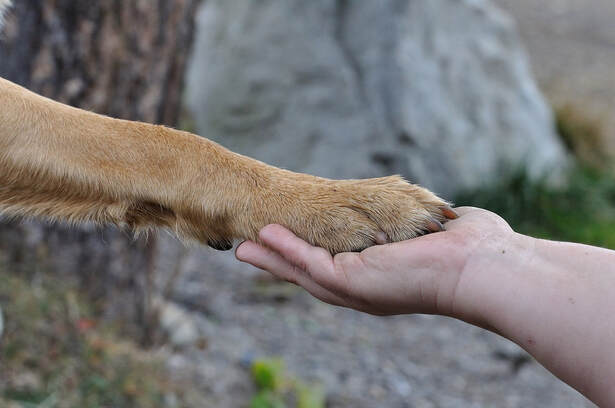
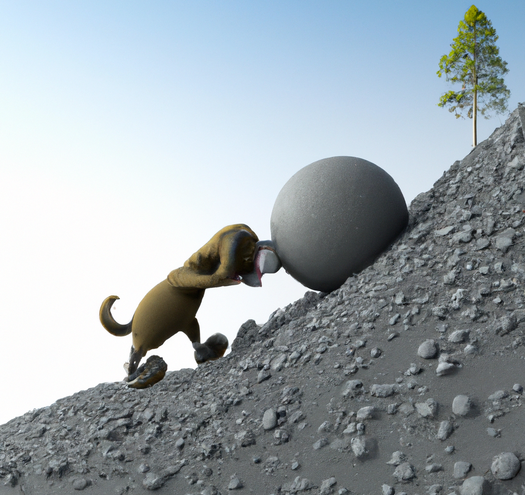

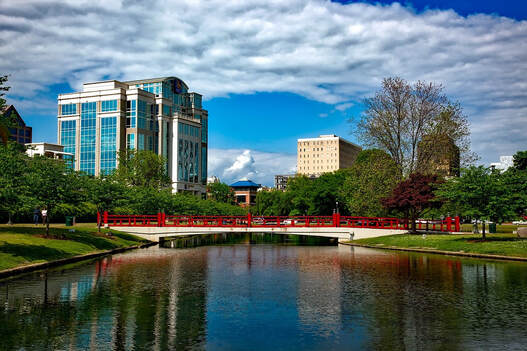


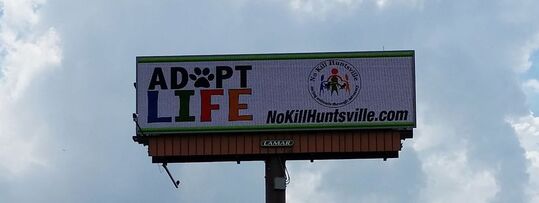

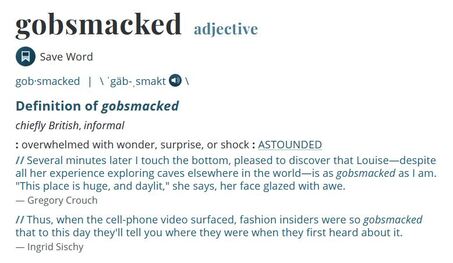

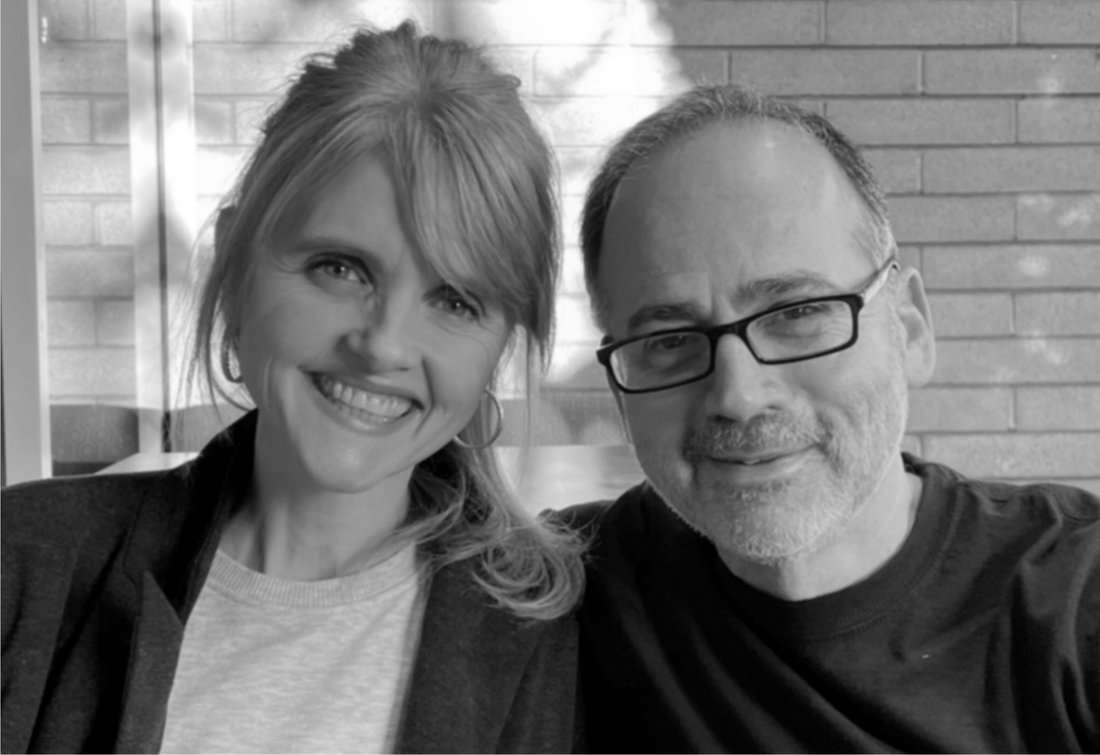
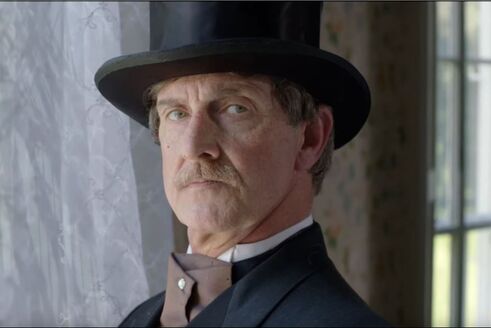
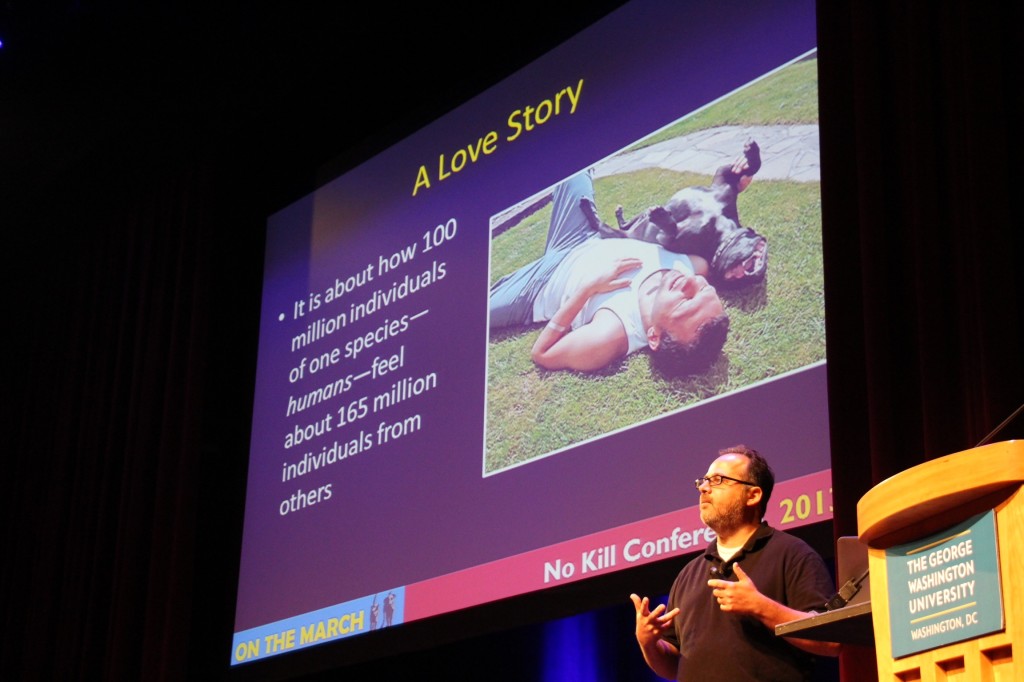
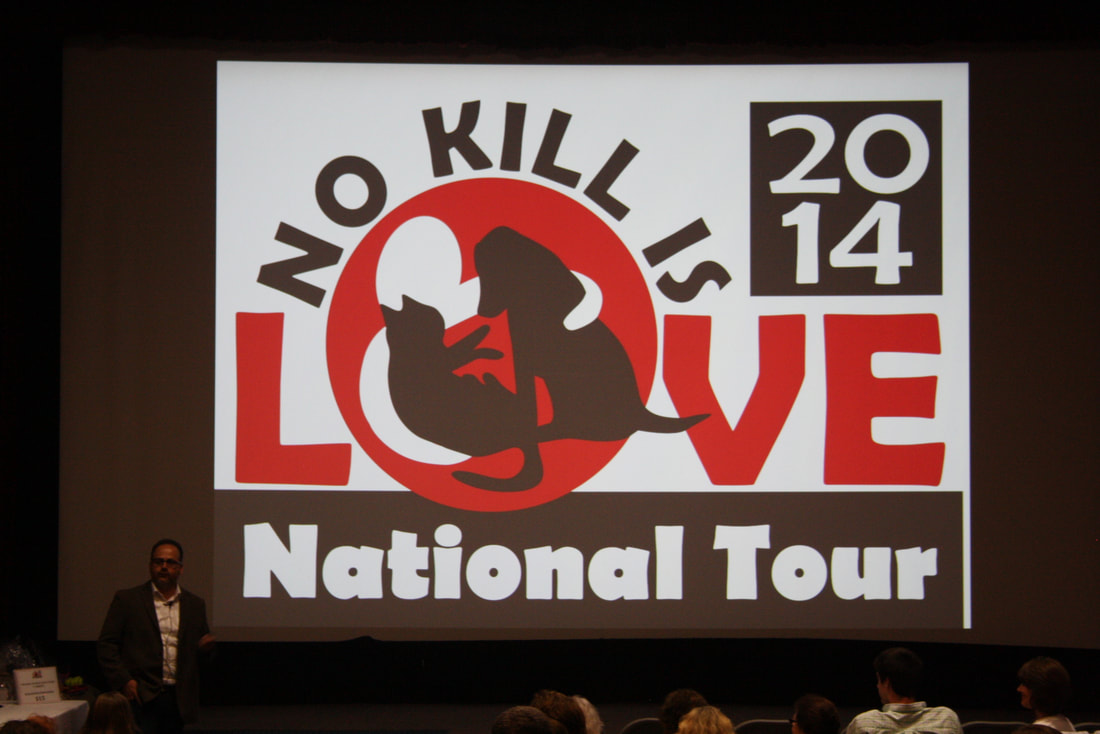
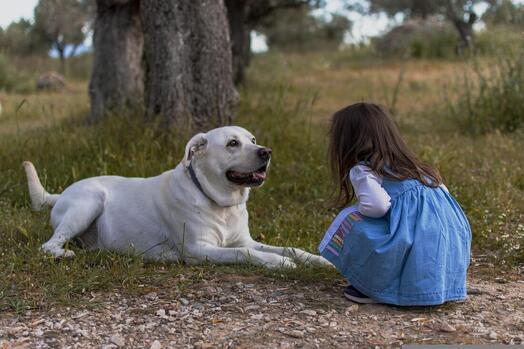
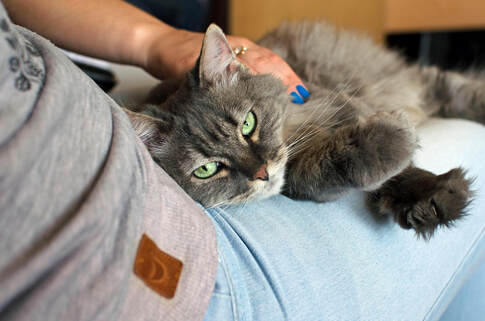
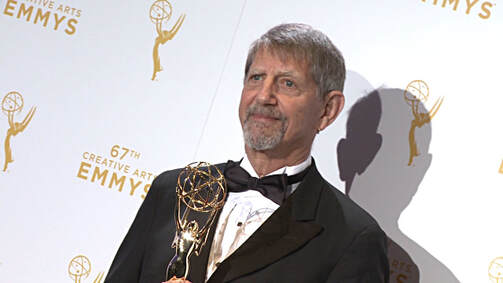

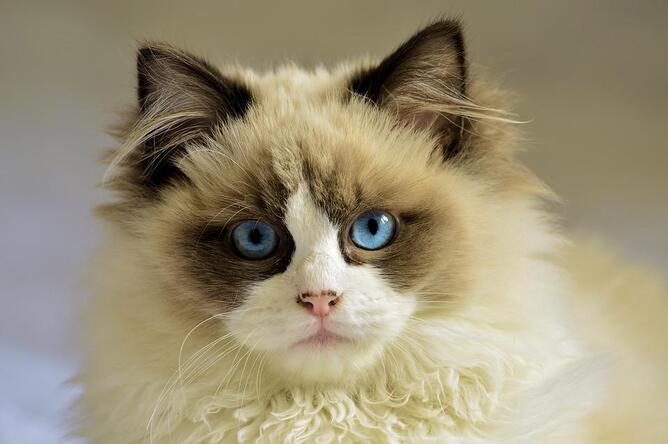



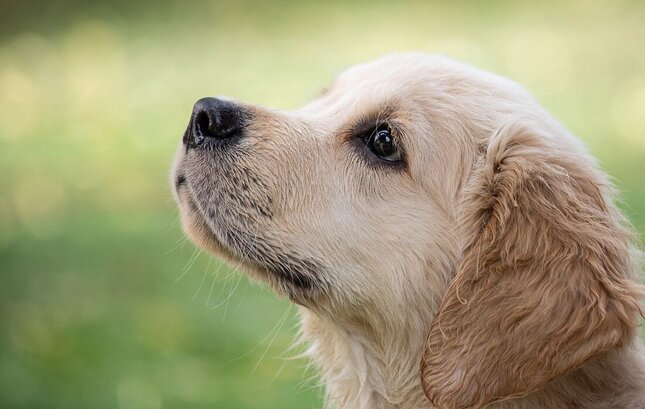






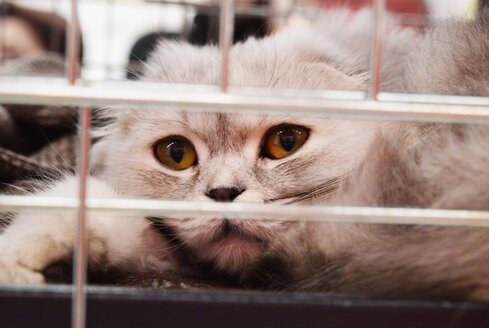
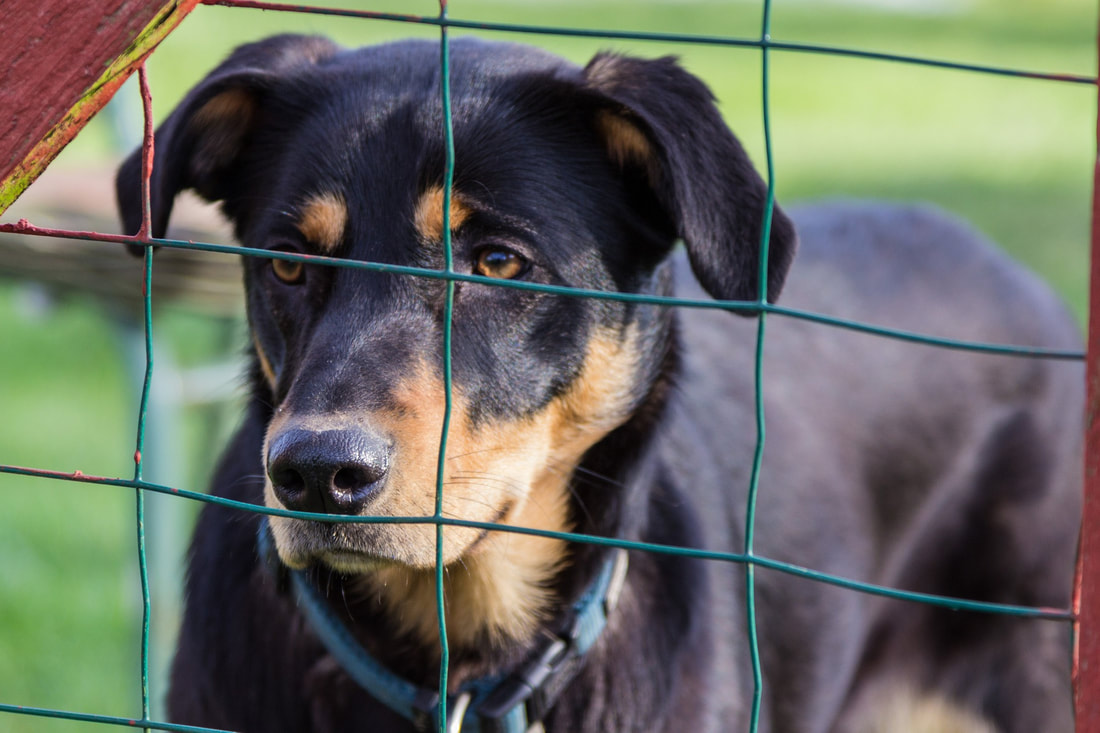
 RSS Feed
RSS Feed